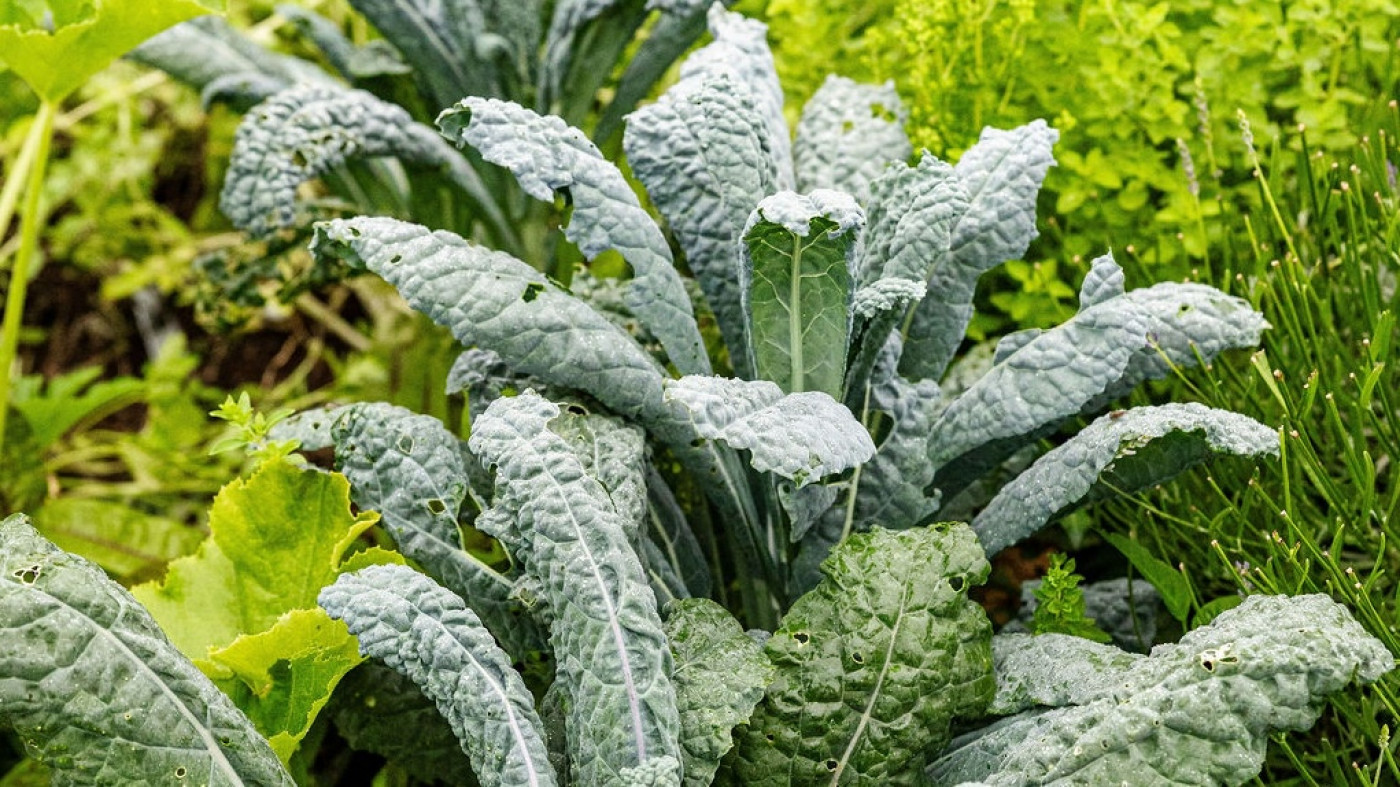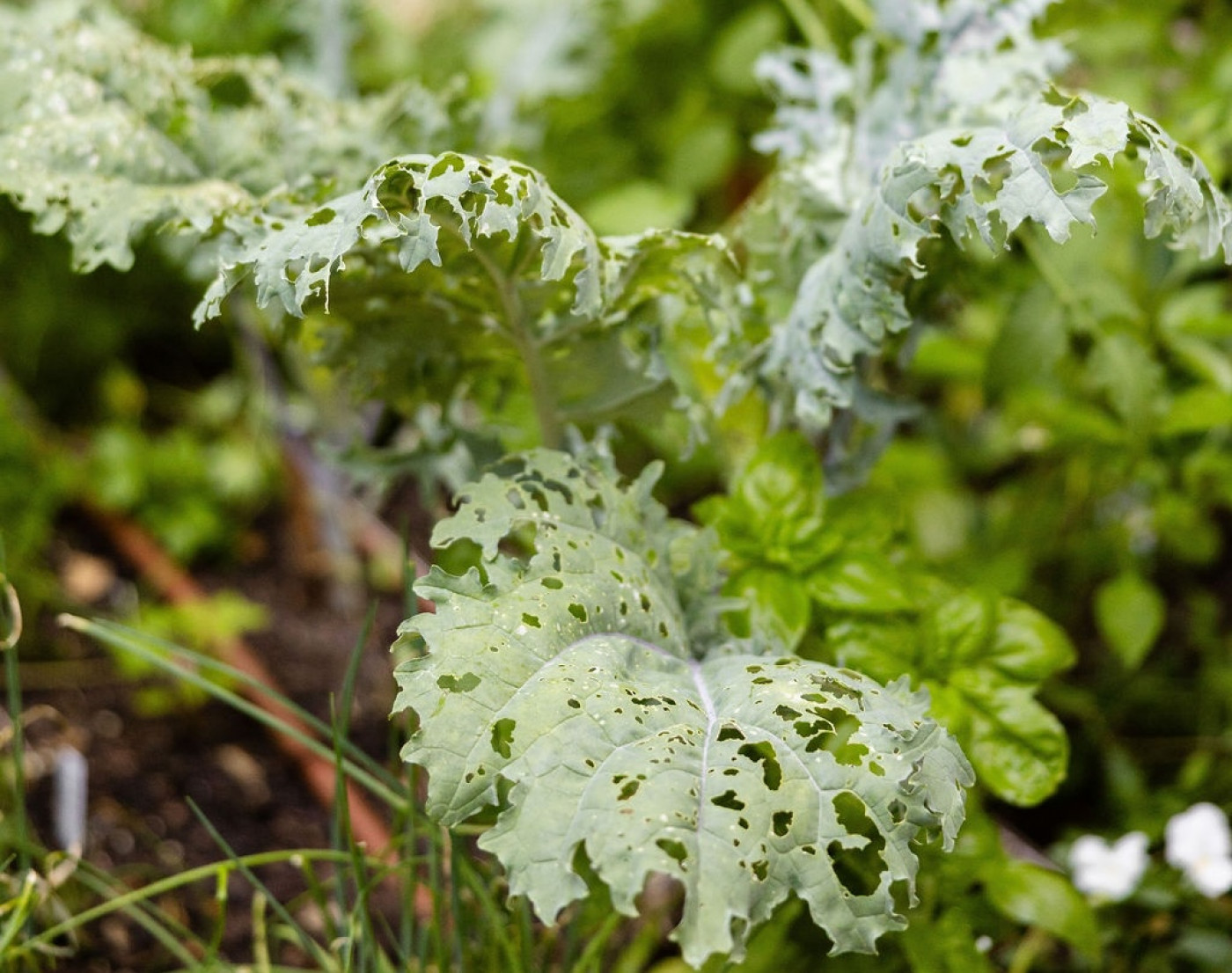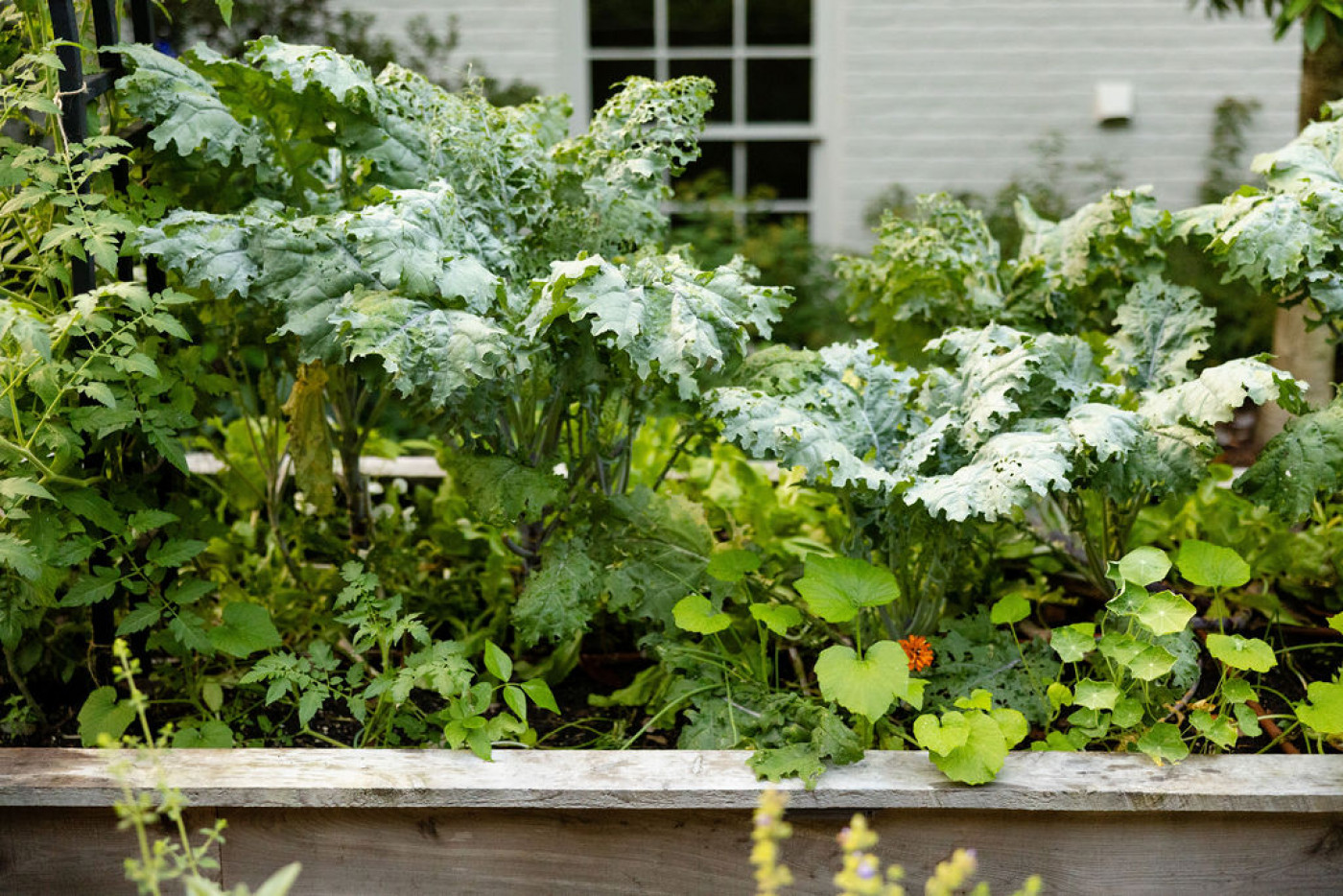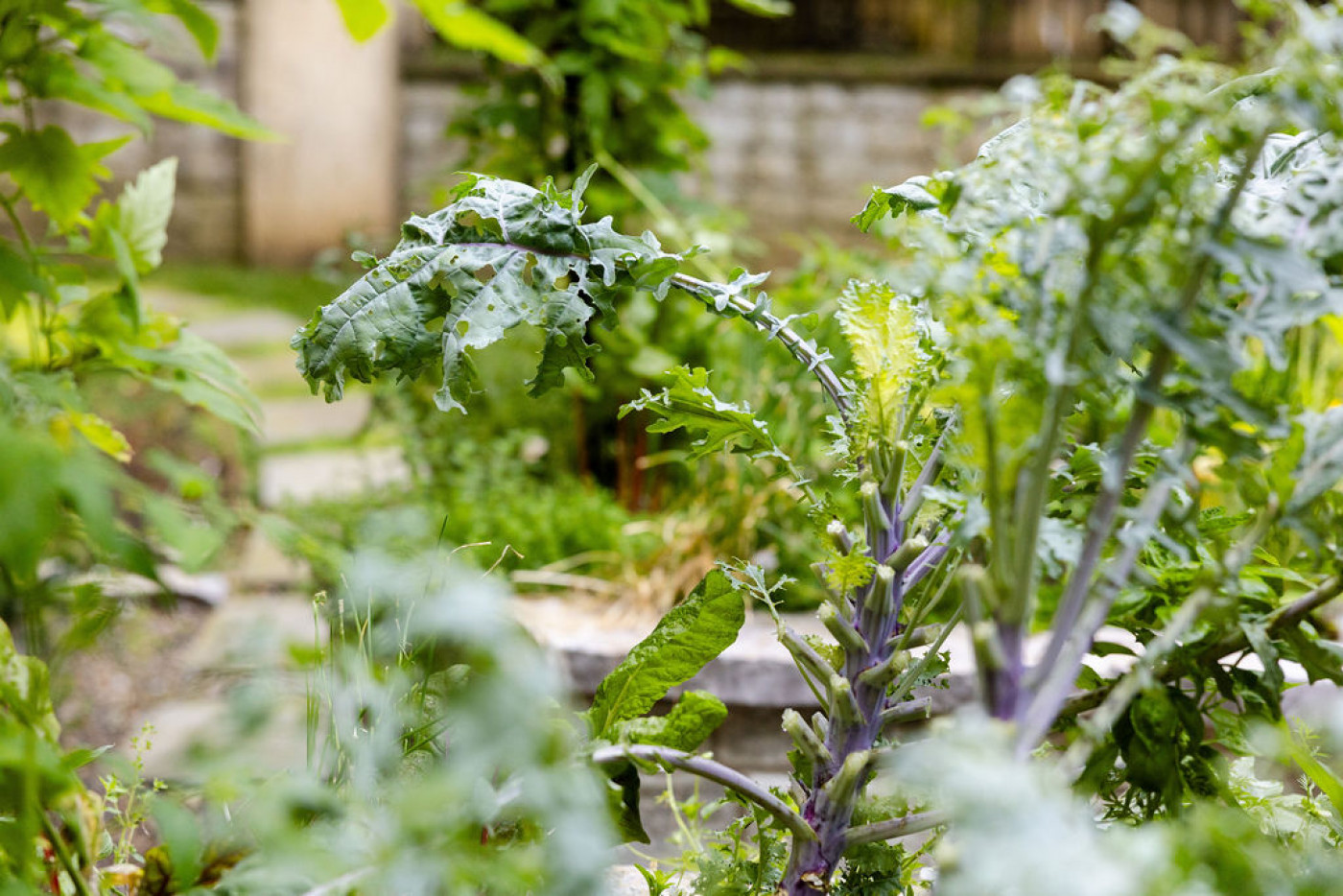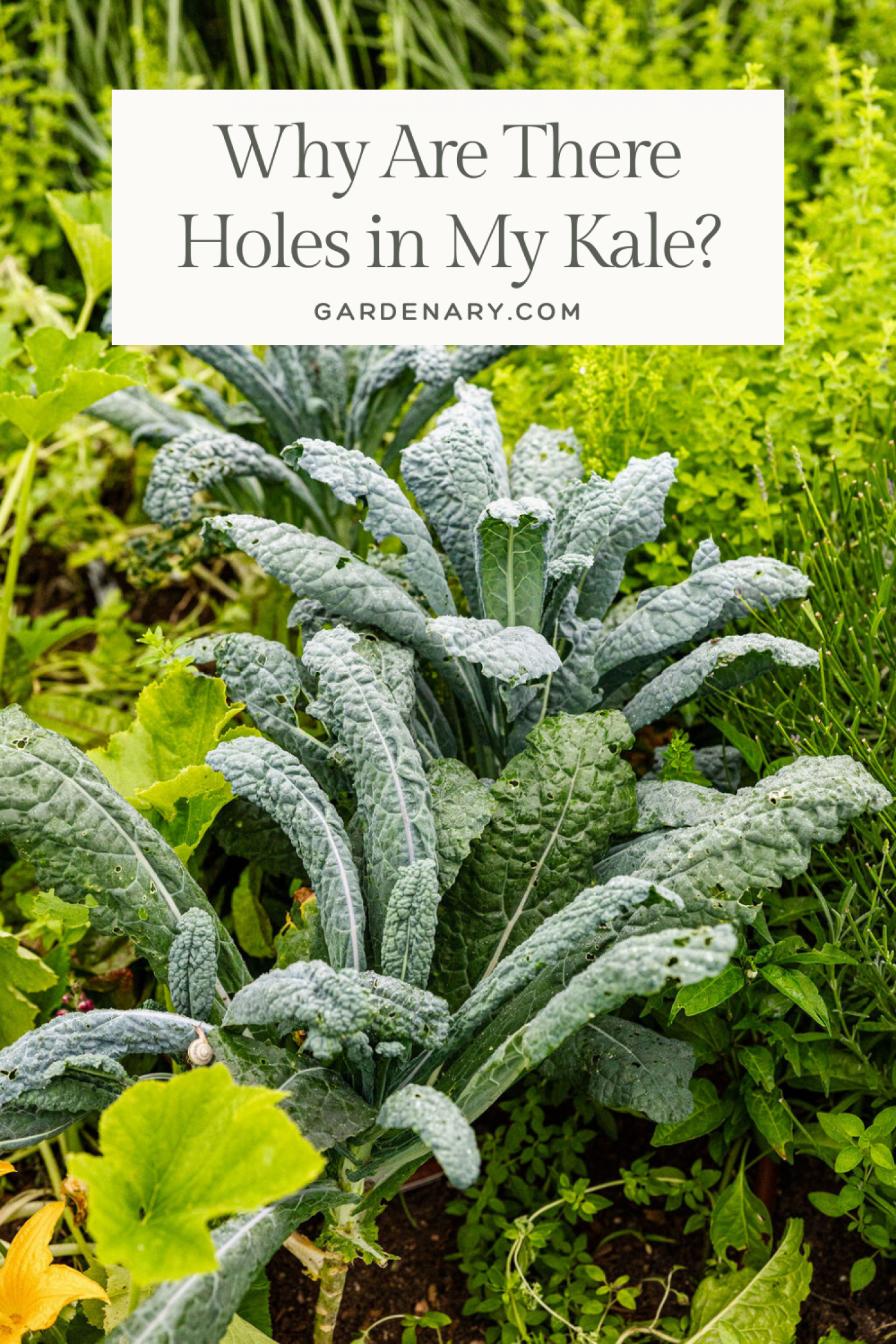Finding Holes in Your Kale Leaves?
Holy kale! If your leaves look anything less than grocery-store perfect, are they even still edible?! Let’s talk about what’s causing those holes and what you can do about it.
I’ll give you the first bit of good news. Holes on nice, healthy-looking leaves are rarely a sign of disease. Unless you see discoloration or changes in the structure of the leaves, those holes are probably from some kind of animal besides you eating from the plant.
Wait, Nicole, I thought you said there was good news...
Trust me, disease on plants would be much harder to treat than pests. I typically don’t view pests in my garden as that big of a deal. In fact, a little pest pressure can actually make your kale more nutrient-dense. (That’s the second bit of good news—more on that later.)
Prefer to Watch?
Where Are the Holes on the Leaves?
The location of the holes on your leaves can tell you what kind of garden pest is munching on your leafy greens. Holes along the edges usually mean a bigger animal (like a rabbit) is coming along and nibbling on the outside of the leaves.
If the holes are on the interior of the leaf, that means you have pests crawling along the underside and eating all the way through. While slugs and snails have been known to eat from kale, your culprit is most likely going to be caterpillars, specifically cabbage worms and cabbage loopers. Caterpillars are the first thing I expect to find whenever I start seeing holes in the leaves of my Brassica plants, kale included. Feasting on the leaves gives them all the strength they need to become cabbage moths or similar (we’re typically not talking about soon-to-be-beneficial butterflies).
That being said, if you look closely at the picture below, you can actually see a little slug that's been chewing on the dinosaur kale leaves.
Now that we have a good idea what’s causing those holes, let’s go over what you can do about it.
What to Do About Pests on Kale Leaves
One: Don't Stress About Pests
Instead of being grossed out that something else is dining al fresco on your plants, take it as a positive sign that you’re growing healthy, nutritious produce in a thriving garden. The animals are going, “Wow, organic and delicious food—let’s have some!” That means there’s nothing disgusting or synthetic about your garden to warn animals away, and if there were, would you really want to be putting anything from that garden in your body?
As a wise woman at a farmers' market in Nashville once told me, “Honey, if the caterpillars don’t want to eat it, it ain’t no good.”
While I don’t want my garden to be a 24-hour free-for-all buffet, I do have tons of kale. I can afford to share a bit with very hungry caterpillars.
Two: Prune Damaged Leaves
As soon as I start to spot an issue, I’ll grab my pruners and cut away the leaves with holes in them. The pest will often still be hanging out on the leaves (there might even be some cocoons under there), so pruning is an easy way to remove the problem. Pests focus on the bigger outer leaves of your kale plants, so the newer leaves at the center of the plant usually won't have any holes at all.
Take the holy leaves inside, wash them, and eat them.
Wait… Nicole, are you serious?
Yup. I’ll tell you why in a minute.
Three: Clean the Soil Around the Plant
Use a little hand rake or your fingers to pick up dead leaves, weeds, and debris around the base of your plants. Caterpillars like to hide in the shade of your plants when it’s hot and then come out to dine at night. This is one of the reasons I don’t recommend putting wood mulch in your raised garden bed: it gives all the pests a convenient place to hide!
While you’re working, check the stem of the plant for visible pests. You could even take a garden hose and give the plant a good spray (this works well for aphids or smaller pests).
Four: Cover Your Leafy Greens or Welcome Predators
I’m more of a “let it be” kind of gardener, so I would usually just add some compost to the base of my kale plants to support them while they fight off the pests.
If you’re really concerned or if the pest pressure is heavy, you could cover your raised beds with garden mesh. (Read more about using garden mesh as an effective form of organic pest control.)
You only want to cover, however, once you’re confident you’ve removed all of the pests first. Otherwise, you’re basically locking the bugs inside an unlimited buffet and cutting off any threat from their natural predators. That’s why covers are a good thing to use at the outset of planting to prevent pests, rather than to treat.
Speaking of predators, you could invite natural predators into your garden. If birds come into your garden space, for instance, they’ll take care of your caterpillars for you. Consider adding a bird feeder or a bird bath.


If the infestation is still bad, you have two options: you could pull the affected plant altogether from your garden so that it can no longer harbor pests, or you could spray castile soap diluted with water. I generally deal with pests using the above four steps before I ever consider using spray, even something organic like castile soap.
Is It Okay to Eat Kale Leaves with Holes in Them?
All right, I promised I would talk about how pest-affected plants are not just edible, they’re actually better for you. Sounds crazy, right?
Here goes: When kale leaves are attacked by pests, the plant doesn’t just surrender to the invaders. While you’re searching leaves for caterpillars, the plant starts doing its own thing internally to keep itself alive. After all, it wants to stay alive as much as you want it to stay alive. What it does is produce more antioxidants and send more nutrients to the leaves to help fight off the invader. That means there are more vitamins, more of what your body needs, inside those leaves that have been attacked.
So go ahead… eat the holy kale.
Don’t Be Discouraged If Pests Are Eating Your Plants
Holes in your leaves are a sign that you’re doing everything right and nurturing a thriving garden that’s filled with all kinds of life. They’re also a sign that you need to get out to your garden every day and beat other animals to your delicious leaves!

